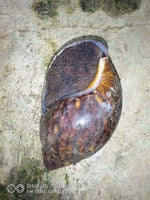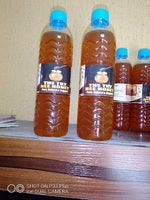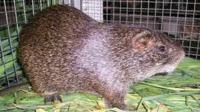Post by Ismail AbdulAzeez on Jun 17, 2017 18:58:33 GMT 1
Feeds' are the major operational cost items in a pig enterprise. Pigs require feed to meet biological needs for maintenance, growth and production. There are six Classes of nutrients required by the pigs:
•Water
•Energy
•Protein
•Vitamins
•Minerals and Liquid
These nutrients can be supplied by a wide variety of feedstuffs. The feed must be given to the pig in the right quantity and quality.
Nutrients Required by Pigs
Water: Next to air, water is the most essential nutrient for life. It should be supplied clean and daily.
Most feeds and feeding stuffs especially green leaves contain appreciable quantity of water.
Water is of particular importance to pig production in the topics as the pig require water to enable it maintain body temperature.
Lack of water quickly leads to a rise in body temperature and death.
Energy: The bulk of energy in pig rations is supplied carbohydrates which are the-major components of cereal grains such as maize, guinea corn, millet-and roof crops such, as yam, cassava and potato.
Fats contain higher levels of energy than carbohydrate. Fats commonly used in pig rations include palm oil, groundnut oil, soya-bean oil and tallow.
Lipids: Although fats are used primarily as energy sources, it has been known that the pig have a requirement for one essential fatty acid linoleic acid.
Protein: Because protein sources are expensive, they are often the most limiting in commercial feeds. The most commonly used protein containing feedstuffs in Nigeria are: Groundnut cake, soya bean {fully fat}, soya-bean meal, cotton seed cake, palm - kernel meal and blood meal.
Minerals: These are the nutrients found in bone. There are 13 essential inorganic element known to be required by the pig.
i.The minerals that must be provided for in practical pig rations in sizeable quantities are calcium, phosphorus, sodium and chlorine.
ii.Iron is very important to the piglets. So much so that it has to be injected directly even if the piglets does have access to iron in the soil.
iii.Bone meal, oyster shell and limestone are the most common sources of calcium and phosphorus in pig rations.
Vitamins: These are organic compounds required in small amounts for normal growth, reproduction and health maintenance.
Vitamins A, D, E, ad and K are fat-soluble while the B vitamins are water-soluble. Common sources of vitamins for swine include green leaves and vegetables.
Methods of Feeding Pigs
Full Feeding:
For maximum daily gain, it is usually necessary to allow the pig access to feed at all times.
On Floor Feeding:
This is suited particularly to control feeding of finishing swine or the breeding herd. Feeding of pigs in their sleeping area on solid floors encourages cleanliness, since pigs are less inclined to dung in their eating and sleeping areas.
•Water
•Energy
•Protein
•Vitamins
•Minerals and Liquid
These nutrients can be supplied by a wide variety of feedstuffs. The feed must be given to the pig in the right quantity and quality.
Nutrients Required by Pigs
Water: Next to air, water is the most essential nutrient for life. It should be supplied clean and daily.
Most feeds and feeding stuffs especially green leaves contain appreciable quantity of water.
Water is of particular importance to pig production in the topics as the pig require water to enable it maintain body temperature.
Lack of water quickly leads to a rise in body temperature and death.
Energy: The bulk of energy in pig rations is supplied carbohydrates which are the-major components of cereal grains such as maize, guinea corn, millet-and roof crops such, as yam, cassava and potato.
Fats contain higher levels of energy than carbohydrate. Fats commonly used in pig rations include palm oil, groundnut oil, soya-bean oil and tallow.
Lipids: Although fats are used primarily as energy sources, it has been known that the pig have a requirement for one essential fatty acid linoleic acid.
Protein: Because protein sources are expensive, they are often the most limiting in commercial feeds. The most commonly used protein containing feedstuffs in Nigeria are: Groundnut cake, soya bean {fully fat}, soya-bean meal, cotton seed cake, palm - kernel meal and blood meal.
Minerals: These are the nutrients found in bone. There are 13 essential inorganic element known to be required by the pig.
i.The minerals that must be provided for in practical pig rations in sizeable quantities are calcium, phosphorus, sodium and chlorine.
ii.Iron is very important to the piglets. So much so that it has to be injected directly even if the piglets does have access to iron in the soil.
iii.Bone meal, oyster shell and limestone are the most common sources of calcium and phosphorus in pig rations.
Vitamins: These are organic compounds required in small amounts for normal growth, reproduction and health maintenance.
Vitamins A, D, E, ad and K are fat-soluble while the B vitamins are water-soluble. Common sources of vitamins for swine include green leaves and vegetables.
Methods of Feeding Pigs
Full Feeding:
For maximum daily gain, it is usually necessary to allow the pig access to feed at all times.
On Floor Feeding:
This is suited particularly to control feeding of finishing swine or the breeding herd. Feeding of pigs in their sleeping area on solid floors encourages cleanliness, since pigs are less inclined to dung in their eating and sleeping areas.












